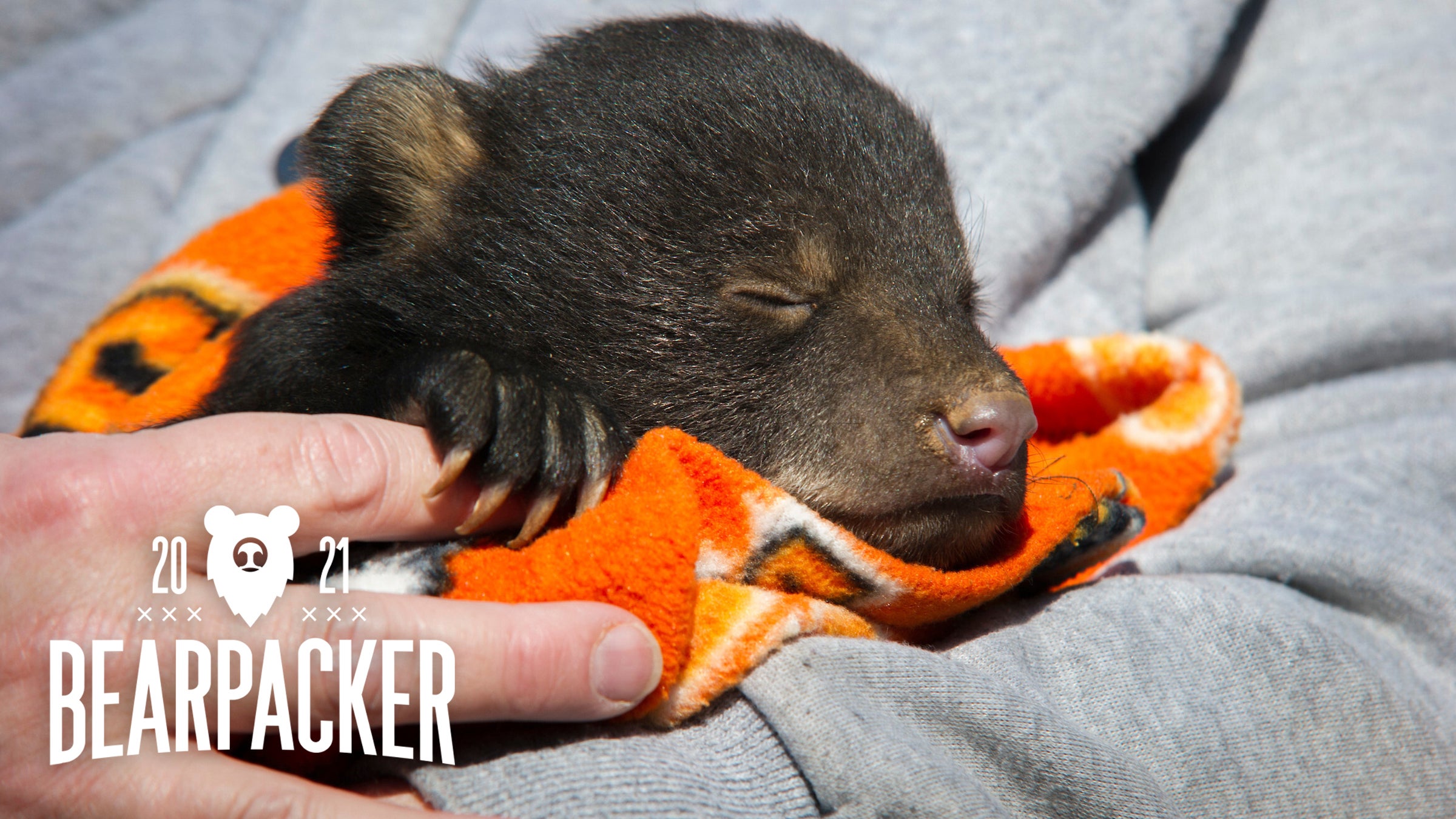In the Woods of Oklahoma, Researchers Are Helping to Rebuild a Bear Population

(Photo: Courtesy of Oklahoma State University)
Bearpacker is Backpacker’s annual celebration of bear safety, science, and stories.
Rambler, a black bear with brown points on his nose and eyebrows, spends late spring and early summer months in eastern Oklahoma. When autumn closes in, he moves west. As the crow flies, he covers about 60 miles, but as a bear walks, it’s farther. It’s no pleasure cruise: Rambler is after what he and his species need to survive.
Bears have been spilling over into Oklahoma from a reintroduction effort in Arkansas, and females occupy new landscapes more slowly than males do, so Rambler is compelled to travel east along the Ouachita Mountains each spring to find a mate. But, to the west, he finds few other bears nosing around for acorns in the dense stands of oak trees. With no one else to share the feast, he fattens up from about 350 to 450 pounds. Then, he piles up pine straw, digs a divot in the center, and curls up to hibernate in what looks like a huge bird’s nest, its edges 3- to 4-feet tall.
Read More: I’ve Written About Human-Bear Incidents for Years. Here’s What I Wish People Knew.
His radio collar sends signals back to Sara Bales Lyda, who since 2011 has worked for the Oklahoma Department of Wildlife Conservation to track bears resettling the state after a century-long absence. Collecting data on where a bear travels allows researchers to follow the bear’s path and get a picture of the habitat and resources on the ground, Lyda says. But why they move matters less than figuring out where they’re going and how stable their population is. These points are important for wildlife managers looking to balance human needs and bears’ wants.
Bears aren’t exactly newcomers to the Southeast. Historically, they were widespread across the region until settlers moved in and nearly wiped them out through habitat fragmentation and overhunting. Then, in the 1950s and ’60s, Arkansas reintroduced them—“really progressive for that time,” says Sue Fairbanks, a wildlife biology professor at Oklahoma State University. The bears didn’t feel constrained by state boundaries either, spreading into Oklahoma and Missouri. As Lyda points out, that migration is very much in progress
“The open question is how they’re going to be recolonizing areas, in what directions, and how are they going to move into those new areas,” Lyda says. “You don’t get answers in a short amount of time. You need a lot of years to really get down to business to figure out what’s driving them.”
The southeastern bears tend to be a little smaller than black bears found farther north. A few of them max out the researchers’ scale, which tops out at 500 pounds, but most are much smaller. Some come in “cinnamon phase,” their coats a reddish-brown. Scat surveys suggest Oklahoma’s bears are more than 90% vegetarian, living off berries, acorns, chestnuts, and hickory nuts, Fairbanks adds. If meat shows up, it’s often ants and bees. With little winter kill, deer is a rarity. They also trend toward higher elevations — possibly because that’s where to find lots of acorns and few humans.
Male bears, like Rambler, travel more widely and seem less deterred by chunks missing from their forest habitat, crossing swaths of prairies and pastures females tend to avoid. Females tend to post up in a home territory adjacent to or even overlapping with their mother’s, where they forage and den repeatedly. So as a new bear population moves into an area, it’s a bit of a boys’ club. A new population, like the one in the Ozarks in northeastern Oklahoma, won’t be self-sustaining until there’s a more even mix.
The importance of females to a stable population means that researchers pay very close attention to them. One bear in particular stands out for Lyda: Bertha was first collared in 2001 in southeastern Oklahoma. Lyda was still a master’s student then, and Oklahoma’s bear population was about a tenth of what it is now. Researchers have followed Bertha all her life, collaring her first at age 3, watching all the years she had cubs. She’s now 25, and researchers are still keeping an eye on her.
“Bertha is near and dear to our hearts, because she’s our first one that we’ve been able to track and know for sure how old she is and how long she reproduced in the state,” Lyda said. “It’s a success story for that region in terms of being a good habitat for her to live in.”
Creating a “landscape of coexistence” means figuring out where bears can find forest cover and food sources, Fairbanks says. But just as important is negotiating the delicate relationship between humans and bears. Fairbanks’s current research looks at how people feel about bears’ return and how that affects how well the bears do. She’s relaying what she’s found so far—women tend to be more fearful of bears, and rural residents more often bothered by them—to the state wildlife agency to help target outreach efforts where they will make the biggest difference.
So far, the coexistence has been peaceful. Though tracking collars report bears passing through the campgrounds ringing a popular lake, no campers have reported sightings. Hikers spending time in the area spot scratched trees and scat, says Bo Lea, president of the Friends of the Ouachita Trail.
Animal sightings are more elusive. The 223-mile trail essentially echoes the route Rambler takes annually, Lea says. He’s seen them elsewhere in the region, but not during his repeat thru- or section-hikes of the Ouachita. He hangs his food at night, but that’s to dissuade raccoons.
Still, he says, he’s glad to know they’re out there.
“I think it’s great—seems like it makes it more natural, having coyotes or bears,” Lea says. “If you get a chance to see a bear in the Ouachita, that’s a pretty special thing.”